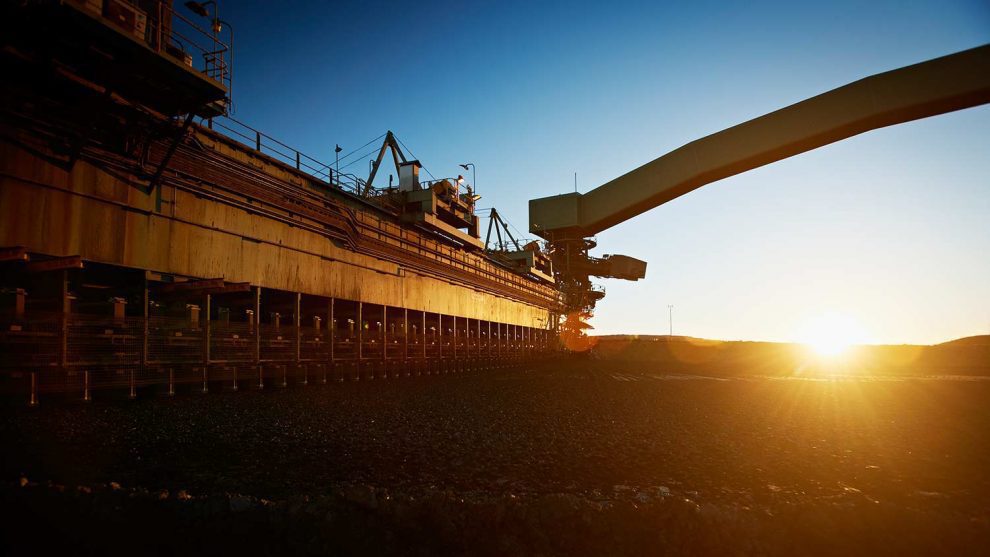Mt Arthur coal mine is the biggest coal mine in the Hunter Valley region of New South Wales, Australia. Located near the town of Muswellbrook, the BHP Mt Arthur coal mine produces thermal coal used for power generation and is sold in both the domestic and export markets.
A wholly-owned subsidiary of BHP Billiton, the mine’s full production capacity is 20Mtpa (million tons per annum) of raw energy coal however in the 2019 FY it reported saleable coal of 18,257,000 tonnes and estimates 2020 reporting to be 17,029,000 tonnes.
In its’ quest for coal the company typically moves around 130, 000,000 tonnes of overburden however in the FY 2020 the company expects to move 144,508,000 tonnes of overburden.
READ MINE SAFETY RELATED INCIDENTS AT MOUNT ARTHUR COAL MINE
History of Mt Arthur Coal Mine
Coal mine development at Mt Arthur Coal commenced in the early 1960s in the Bayswater No. 2 Open Cut mining area. Coal production progressively increased and approval to extract coal from the Bayswater No. 3 Open Cut was granted in 1994. To support the expanding development at Bayswater No. 3 and cease coal transport by public road, approval was obtained in November 2000 for the construction and operation of the rail loading facility and spur line. This allows export coal to be transported directly to Newcastle via the Main Northern Railway.
In May 2001, the Mt Arthur North Open Cut operation was approved to extract up to 15 million tonnes of run-of-mine (ROM) coal per annum. The approval also allowed for the construction and use of associated infrastructure and facilities. Between 2003 and 2006, Saddlers Pit (located in the southern portion of the mine lease area) was maintained on a care and maintenance regime, when mining operations at Bayswater No 3 were effectively suspended.
The majority of the work undertaken during the following period involved reshaping and final rehabilitation of several hundred hectares in the vicinity of the Bayswater No 3 open cut operations. In March 2006, Mt Arthur Coal lodged an application to extend the Mt Arthur North South Pit. The application was approved by the Minister for Planning on 9 January 2008. In September 2006 mining resumed in Saddlers Pit, with overburden removal initially being undertaken by contract miners and coal extraction by Mt Arthur Coal. Mt Arthur Coal assumed responsibility for overburden removal in March 2012.
Also in March 2006, Mt Arthur Coal lodged an application to commence underground mining operations at Mt Arthur Coal Mine. The application was approved by the Minister for Planning on 2 December 2008 (Project Approval 06_0091). The Mt Arthur Underground Project is approved up to 8 million tonnes per annum (Mtpa).
Saddlers Pit was utilised for construction of an underground adit associated with that project. The underground project is currently on care and maintenance with no underground mining to occur during this MOP period.
In 2009, Mt Arthur Coal lodged an application under Part 3A of the New South Wales Environment Planning and Assessment Act, 1979 (EP&A Act) to extend open cut operations and consolidate existing approvals for open cut mining operations and surface infrastructure. The application was approved by the Minister for Planning on 24 September 2010 (Project Approval 09_0062). The Project Approval 09_0062 permitted the extraction of up to 32 Mtpa of ROM coal from the open cut.
In accordance with Project Approval 09_0062, a number of project approvals were surrendered by Mt Arthur Coal in 2011 including Mt Arthur North, the Rail Loading Facility and the South Pit Extension and the Bayswater Coal Preparation Plant. The surrender of the Bayswater No. 3 development consent (210/93) was accepted by the Department of Planning & Environment (DP&E) on 20 May 2013.
In 2013, Mt Arthur Coal lodged an application to modify the Project Approval 09_0062 under section 75W of the EP&A Act (the Mt Arthur Coal Open Cut Modification [the Modification]). The application was approved by the Planning Assessment Commission (as delegate of the Minister for Planning) on 26 September 2014 (Project Approval 09_0062 MOD 1). The Modification includes the continuation of open cut mining operations at the Mt Arthur Coal Mine for an additional operational life of four years from 2022 to 2026 at the maximum rate of 32 Mtpa, an increase in open cut disturbance areas, additional overburden emplacement areas, duplication of the existing rail loop and various additional infrastructure changes.
The Modification Project Approval can be found at http://www.bhpbilliton.com/environment/regulatory-information.
On 2 December 2016, EPBC approval 2014/7377 was granted for the Modification project, aligning the date with
the modification approval life to 2026.
Production
“The Mt Arthur coal mine produces thermal coal used for power generation.”
Mt Arthur is an open-cut coal mine with its mining activities centred on 21 unique seams. These seams were discovered and identified in the initial exploration activities undertaken by the company.
Mining and exploration areas of Mt Arthur coal mine comprise Bayswater no. 2 lease, Bayswater no. 3 lease and the Mt Arthur north lease. Mining at Bayswater no. 2 started in 1968, at Bayswater no. 3 in 1995 and at Mt Arthur North lease in 2002. In recent years, the company has been focussing more on the Mt Arthur North lease area.
The mine produces three products for the export market – MA-12 (12.0%ad ASH product), MA-14 (14.0%ad ASH product) and MA-16 (16.0%ad ASH product).
Mining and processing
The mined coal is moved by truck to the coal handling and preparation plant (CHPP) located near the mine. The coal is then dumped into two hoppers in the CHPP.
The coal goes through initial crushing at the base of the two hoppers. From there the product is transported by a conveyor to the crushing station. Once the coal is crushed it is screened, cleaned and sorted to suit the market requirements.
The CHPP is capable of handling 2,000t of raw coal an hour, which is fed through the crusher. It can also handle 1,200t of coal an hour for preparation.
Transport
After the coal is crushed it is transported to three locations – the local stockpile, the export stockpile and the export coal rail load-out facility.
Coal from the local stockpile is further transported to the Liddell and Bayswater power stations by a 10km overland conveyor.
The stock from the export stockpile is transported to the export coal rail load-out facility. Two-thirds of coal from this facility is transported to the Port of Newcastle for export.
Equipment
The company uses huge equipment including trucks, shovels, excavators, dozers, graders, drills and water carts.
Trucks are used to transport coal to various locations and electric shovels are used to handle overburden. Coal is loaded into the trucks with excavators.
Environment
BHP Billiton’s environmental management system (EMS), designed for the Mt Arthur mine, obtained ISO14001 certification in May 2003. As the area around the mine comprises horse studs, vineyards and olive groves, the company has made rehabilitation a priority. After the coal is mined, the overburden is restored, shaped and enclosed with topsoil. The area is then replanted to ensure that it matches the original landscape.“Mt Arthur is an open-cut coal mine with its mining activities centred on 21 unique seams.”
The company has also developed individual management plans to address issues such as blasting, noise, water use and rehabilitation.
Environmental monitoring programmes have been formulated to make employees and contractors responsible for reducing the impact of mining on the environment. These programmes include a real-time monitoring system that constantly measures noise and dust levels in and around the site. The information obtained from the system helps in regulating environmental impact of the company’s operations.
The equipment used by the company meets international standards of noise limits.
BHP Billiton is also involved in industry-based research projects such as the Upper Hunter River Rehabilitation Initiative and the Australian Coal Association Research Program (ACARP) Cumulative Impact Study.
Future development
The company had been exploring the potential for underground mining at the site located in Bayswater no. 3.
Planning approval for the project was received in December 2008 along with a permit for 21 years of longwall mining. BHP Billiton will be investing A$300m in the expansion project, which will produce 8Mtpa from underground operations.
In March 2011, a new expansion project called RX1 was approved. The project is expected to increase the mine’s production to 24Mtpa by the second quarter of 2013. BHP Billiton will be investing A$400m in the project.
Read more Mining Safety News and Articles














Add Comment